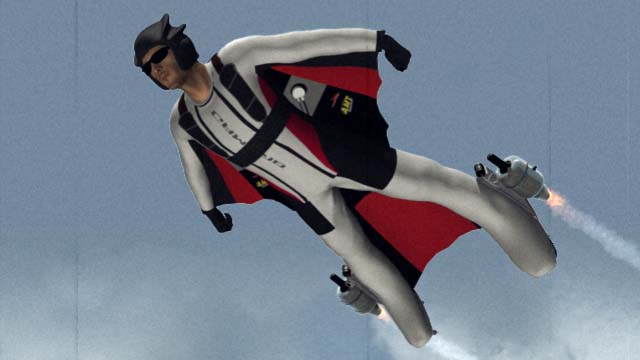So I’m just spitballing here, after seeing this video. Wow, that is not very safe. So I was thinking about what you’d need to make a remotely safe VTOL jet powered thingy. You’d want the engines mounted to a frame, away from the pilot. You’d want a chair - seated position with safety straps make for better survival in rough landings. You’d want the flight control to be mostly automated - some type of high end software solution, trained on a simulated model of the vehicle and tested against all regions of the flight envelope.
As I understand it, jet engines have huge control lag when you adjust throttle. So to hover, you’d need to mount them in pairs. Normally, the pair would be angled slightly away from each other, so the thrust vectors are purely downward, but they are at less than maximum vertical thrust. If you want more thrust, a big servo motor would have to push the engines towards each other, and if you want less, they get pushed away from each other.
So for stability, you’d need 8 engines. Each engine pair is the equivalent of a rotor on a quadcopter. Doing napkin math here, assuming the engines are running at 80% of max thrust, and are mounted such that in neutral control position they are only developing 70% of total thrust in the downward direction (the rest of the thrust is wasted sideways), and using TJ40-G2s, you get 221 newtons of thrust per engine. Or 22 kilograms of downward thrust, or 48.5 pounds.
So if pilot is 200 lbs, and the welded tubing frame + electronics + chair is 100 lbs, and the engines are each 12 lbs, including a beefy servo motor and motor driver and mount, with 16 engines you have 776 lbs of thrust and 492 pounds dry weight. 158 liters of jet fuel gives you a flight time of 10 minutes, assuming 1 liter per minute per engine. (they are not running at max thrust per the data sheet for redundancy)
I have not been able to find a per engine price tag, but am estimating it’s at least $10,000.
It does appear feasible. I wonder why moderately rich hobbyists haven’t built something like this. Obviously, one would extensively test a vehicle like this under remote and automated control using a weighted dummy before anyone even considers riding it.
Waiting for an smackdown of my napkin design from Stranger on a Train and LSLguy in 3, 2, 1…

